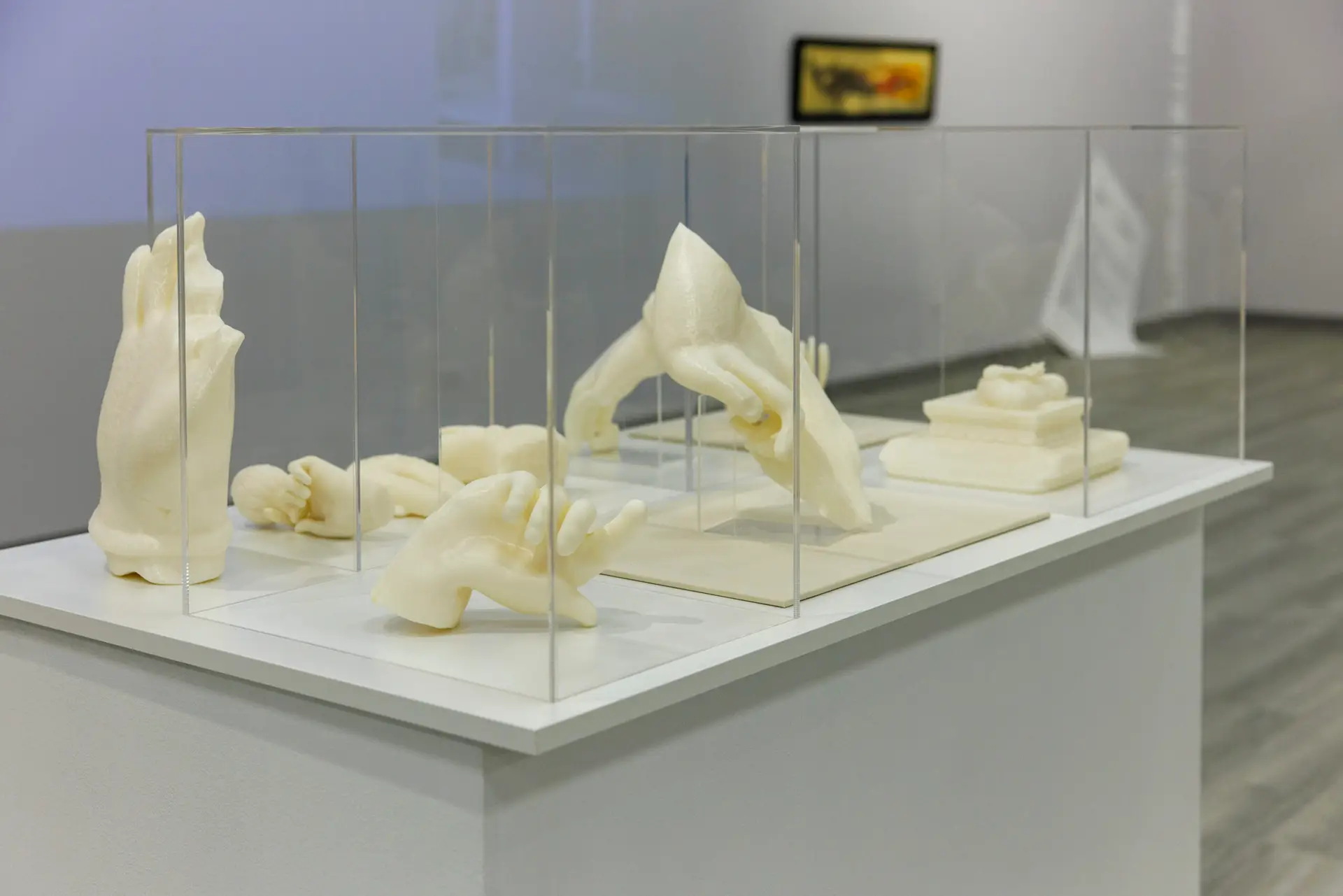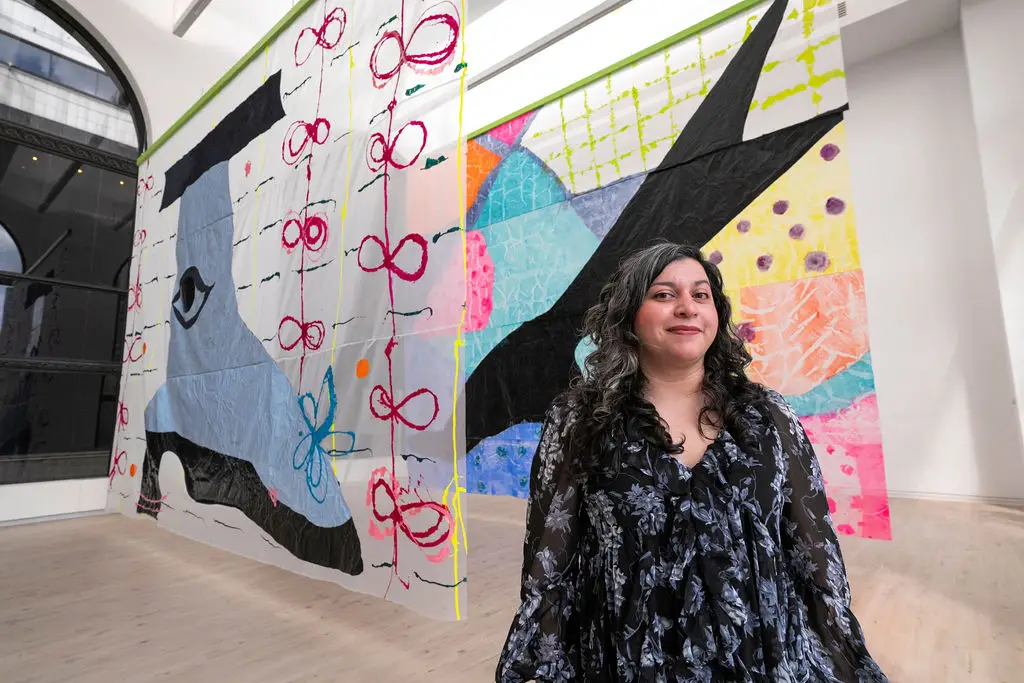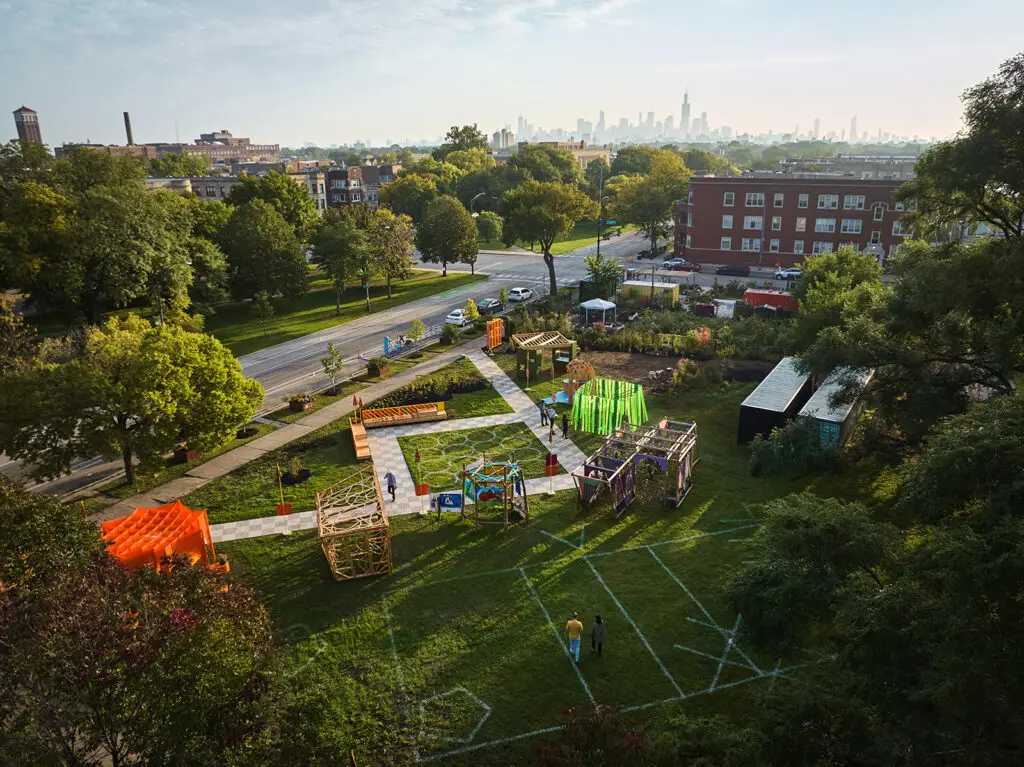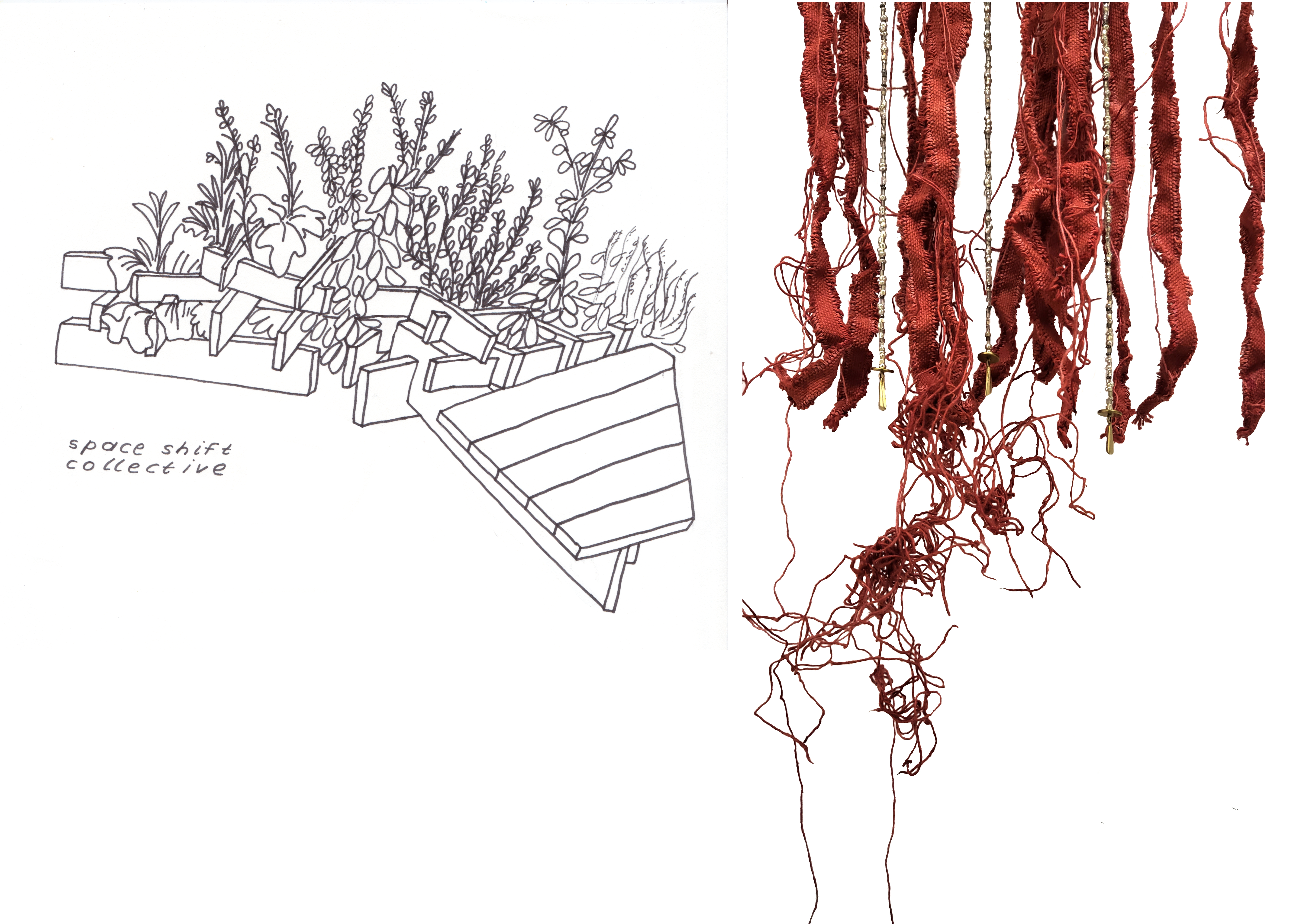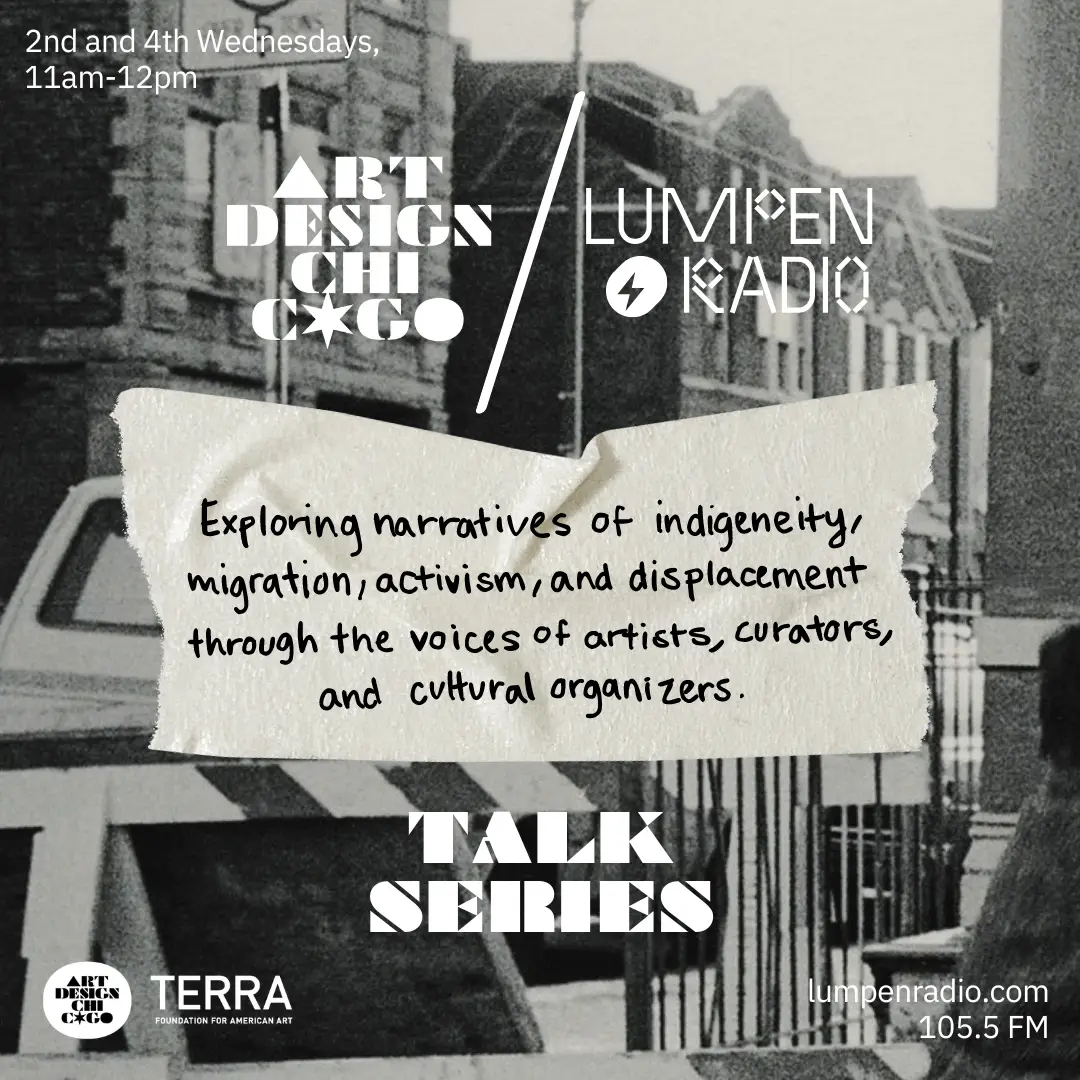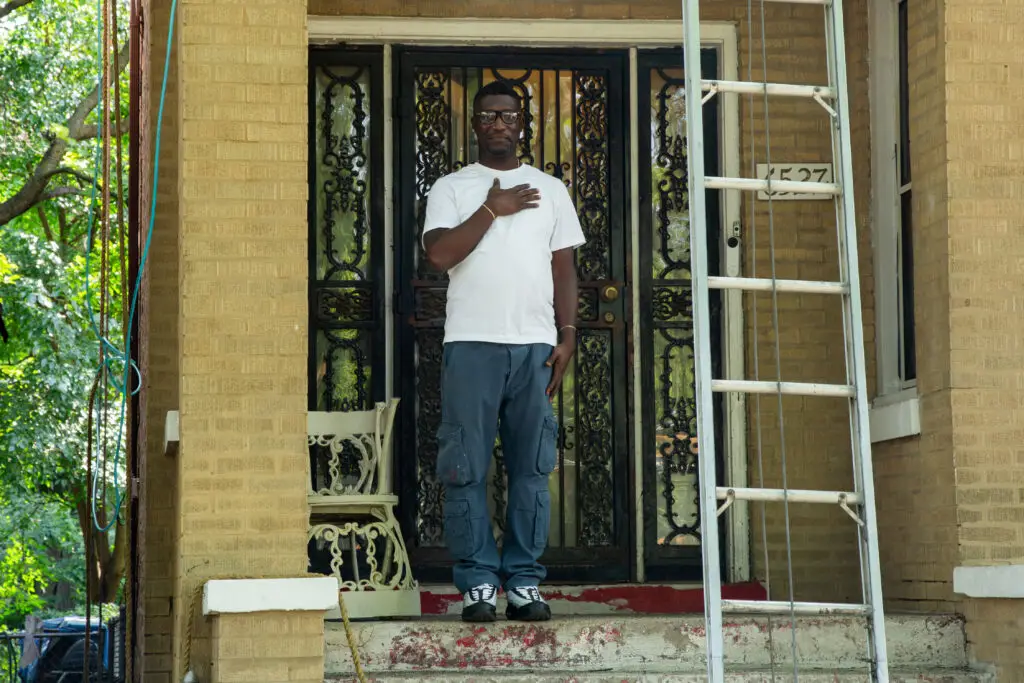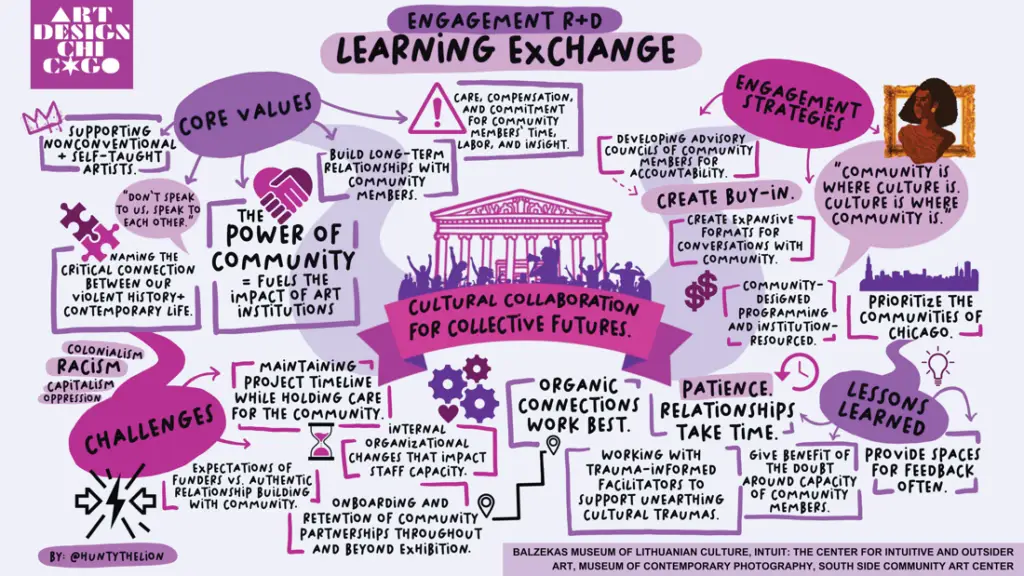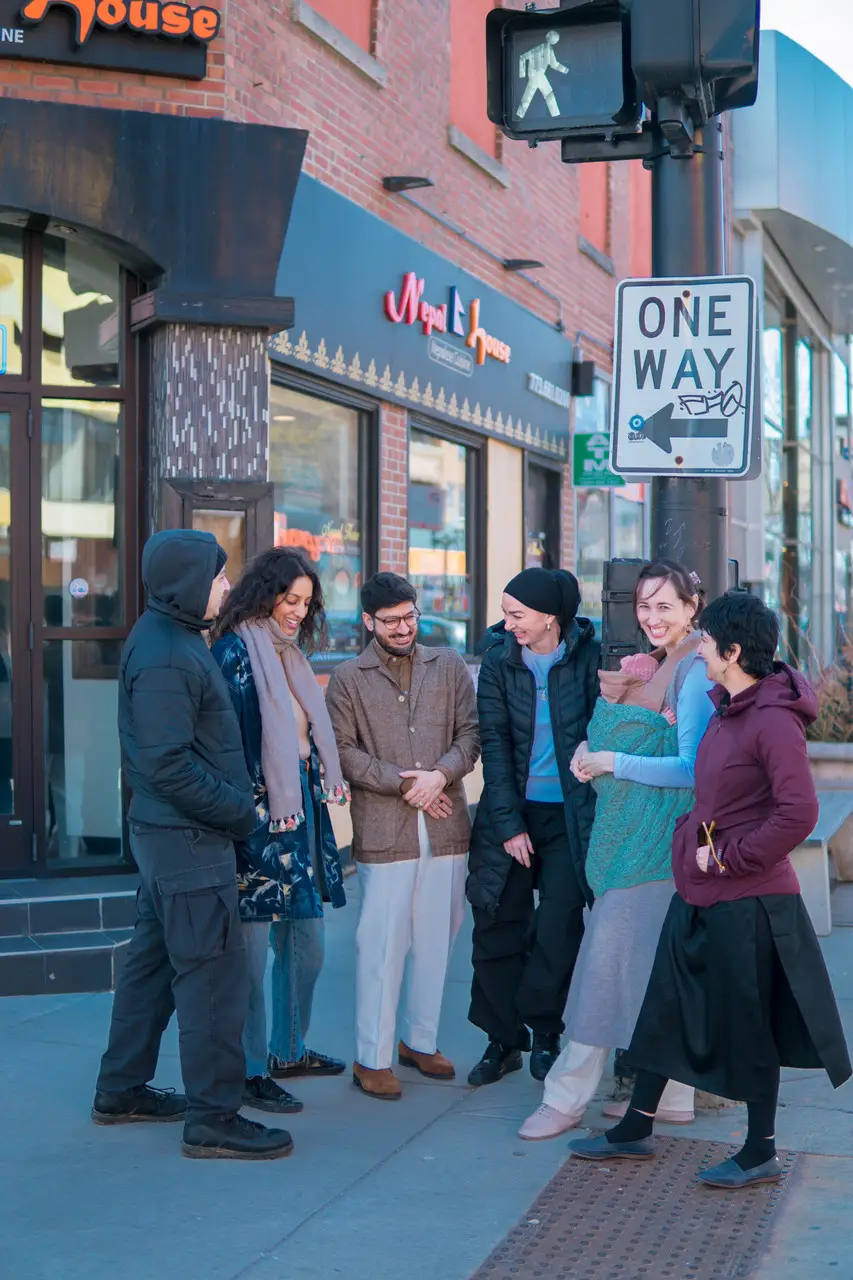Art Design Chicago highlights the voices and stories that are part of Chicago’s unique artistic heritage and creative communities. But at its core, it does even more―through support for a peer learning community whose activities are ongoing, the Terra Foundation also aims to support Chicago-based visual art organizations’ efforts to grow engagement and make access to arts and culture in Chicago more equitable and inclusive.
Over the past two and a half years, Terra Foundation Senior Engagement Fellow Pascale Ife Williams has served as a guide to the Art Design Chicago Engagement Learning Community. An artist, educator, and organizer, Williams brings more than 10 years of experience in justice-driven and community-engaged work to this role. She considers her contributions through a series of questions and answers below.
In creating the container to reflect on my experience, beginning in July 2021, as the Senior Engagement Fellow for Art Design Chicago, I’ve been thinking about some of the questions repeatedly percolating in my mind. The following are a series of such questions (and answers) that have occurred to me as I continue to support the organizations, individuals, and communities directly and indirectly engaged in the Art Design Chicago initiative.
The Senior Engagement Fellow was a newly imagined position when I started. What has my role been, and how have I served the Art Design Chicago community?
One of the wonderful things about stepping into a new, not-yet-fully defined role is the invitation it offers to play and experiment. I thus have approached my work through the lens of experimentation, equity, curiosity, reflection, and innovation. That is to say, I have tried to co-create and support spaces where folks ―all deeply committed to the arts and to culture, as well as to people and relationships―can gather to slow down and reflect on what they are doing, how they are doing it, why, and more. The sessions I’ve co-facilitated have also provided people the opportunity to learn from their peers and elders, and ideally they activate imaginative, playful, and intentional strategies while working alongside the communities they serve. One of my goals as Senior Engagement Fellow is to create a sort of “innovation lab,” where folks can continue to be in conversation and practice as they integrate community-engagement strategies into their programming, exhibitions, and beyond. A lot of my work involves asking questions and listening to the wisdom that comes from folks’ answers—and then helping them interpret that information and translate it into action.
How do I define “community engagement?”
Defining community engagement is difficult. It is perhaps not the most appropriate or best question to ask. Rather, my approach is to ask organizations, “How do you define community?” and “What are the ways you want to engage and invite that community in?” I’ve found that we often get so excited and maybe get ahead of ourselves, in the desire to shift and increase our engagement that we don’t take the time to really think about the community we are most intently looking to serve. And doing so is not intended to exclude others; rather, there is a narrowing-in and an explicit naming meant to help inform the “engagement strategies” that we have chosen to implement. Based on my work history in cultural organizing and political movements, I also try to ground these conversations in questions about access, justice, and ethics.
Through this role, I’ve also realized that my experience within social justice work, specifically the Black liberation movement, orients me in a particular way when thinking about the practices and ethics of community engagement. That perspective is important to share, as it offers a particular framework of care for any “community engagement strategy” or suggestion I would offer.
How does the Art Design Chicago community engage with me?
There are two main ways I have been able to work alongside the Art Design Chicago (ADC) community thus far. The first is through learning community sessions― a predominantly virtual space for participating organizations to intentionally engage with one another, hear from invited guests around theme-based panels, and join in conversations, and/or working sessions. In essence, these sessions represent a place to play together, to engage, to ask and answer questions, and to explore better ways to do the work of equity-informed arts practice, programming, and exhibitions. The learning community space, conceived by the Terra Foundation team and a steering committee was inspired by insights gathered from previous iterations of Art Design Chicago. Examples of recent (2023) learning community sessions include: a “Learning Exchange,” an opportunity for current ADC organizational members to present overviews of their ongoing projects, speak to lessons they have gathered thus far, and receive support through resources that might address some of their challenges. We also had a two-day convening in partnership with the Black Arts Movement School Modality, a forum that allowed folks to hear directly from artists, administrators and organizers active during the Black Arts Movement of the ’70s onwards.
The second way I have engaged people is through one-on-one conversations and on-site visits with the project teams of respective ADC organizational grantees. I’ve conducted “site visits” (this term, I soon realized, was an unfortunate misnomer and was clarified, as it was causing organizations slight levels of anxiety as they anticipated being evaluated or assessed). These visits are intended to foster an open-format dialogue about challenges and possibilities within “community,” “engagement,” and “strategies,” and to think about ways to document and institutionalize particular lessons and practices. Ultimately, I hope these efforts also offer a space for the team to―again―pause, slow down the grind, and be in thoughtful conversation about the textures within the project―“How do we want people to feel? What would best support our team to do this work? Where/how can we make space for emergence and experimentation?”
What has surprised me the most? What are some lessons I’ve gathered thus far?
Not surprising, but still noteworthy: possibilities galore do always present themselves when you intentionally gather a group of folks―in this case, creative and curious artists and administrators! It has been wonderful to witness folks vibe off one another: seeing folks enthusiastically offering references, genuinely voicing affirmations, and constructively making suggestions.
This sort of energy feels aligned with the zeitgeist, evident in everything from the “racial reckoning” ushered in during the uprisings of summer 2020 to the explicit centering of disability access. Nonetheless, I have been pleasantly surprised to feel this commitment in the conversations we are having and to see that folks are open to—and are really having—the necessary conversations about the intersection of arts and injustice/justice. This extends to the responsibility that arts institutions and cultural organizations “do the work.”
Some of the lessons continue to be: Listen. Give yourself space to really sit with the project (more space than you thought or perhaps more space then feels comfortable). This awareness should be coupled with “slow down”: integrate opportunities into your timeline and work plan to reflect on and just cypher (discuss without an agenda, for example) about what’s up, what’s behind, what’s ahead―how it’s all making you feel in your body! Be clear on your capacity and needs. Ask for help. Have fun, think about the work as play/practice. Allow yourself to set a plan then diverge (knowingly and emergently) from that plan.
Lastly, I wanted to offer this reflection about the separation within the self that we, as humans, often create. I sometimes separate the work I do in professional arts spaces from the work I do in the community as a healing justice practitioner. As I continue to be presented with opportunities to be in these spaces alongside others, I understand more and more that the work of liberation is not dissimilar to the work of arts programming and exhibitions. It’s work that centers people’s (or plants’ and other living non-humans’) lived experience (past, present, future). This demands that we honor and center dignity, autonomy, and the moments in their lives as special contributions to us―ones that fill the pages of our books or cover the walls of our galleries. I’m trying to get better at this by listening, truly listening. I hope these reflections inspire something in you!
ABOUT THE AUTHOR
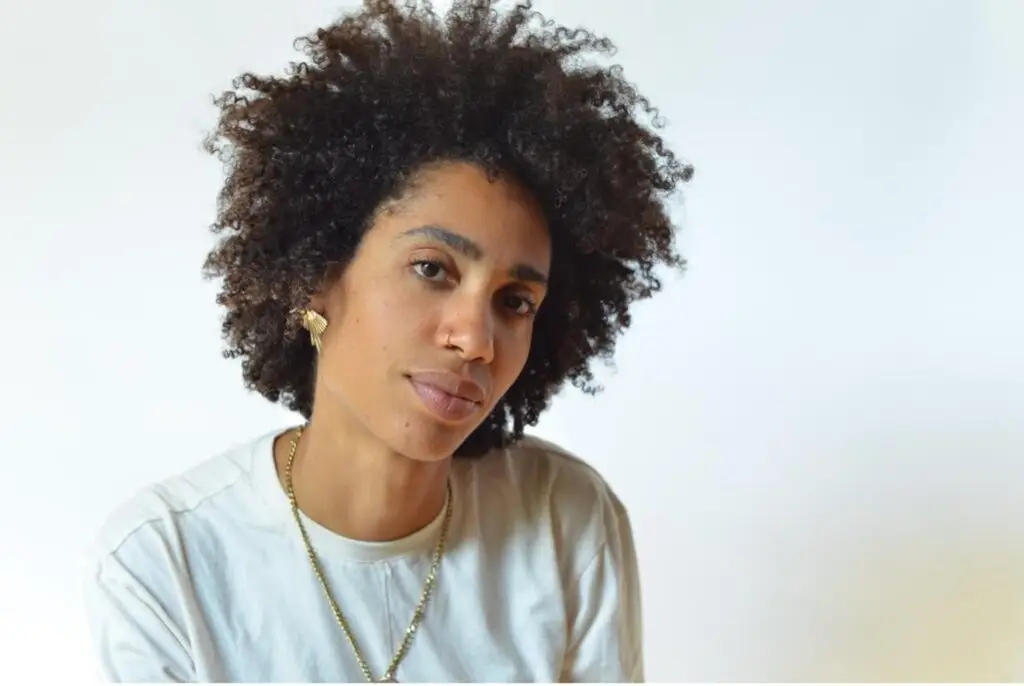
Dr. Pascale Ife Williams
Pascale Ife Williams, PhD is a cultural organizer, educator, disruptor, healing justice practitioner, and scholar. Ife is a Chicago native with over 15 years of experience in justice-driven arts and community-engaged work that explores and engages racial, gender, and wellness equity. She invites communities to co-design their realities through radical imagination, strategic visioning, and creative healing practices. Ife currently works as an independent community researcher and cultural scholar, documenting and celebrating LGBTQIA present histories and serves as Senior Engagement Fellow for the Terra Foundation for American Art.



